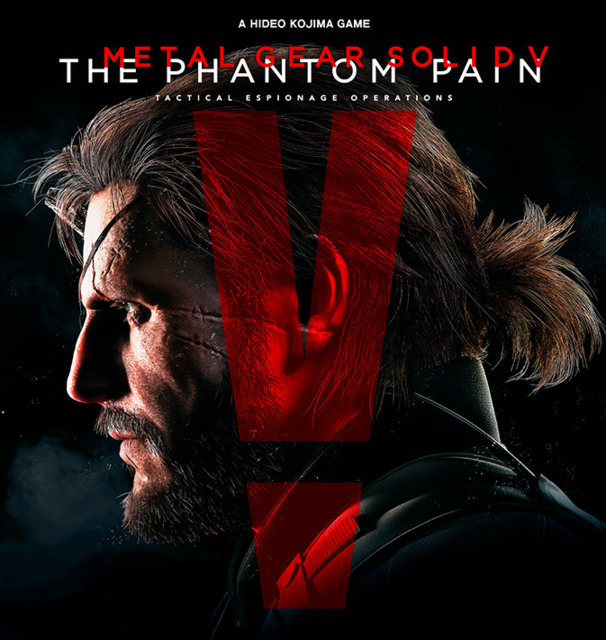A Masterpiece of Espionage and Emotional Resonance

In the world of video games, few franchises have achieved the level of acclaim and notoriety as Hideo Kojima's Metal Gear Solid series. Over the years, this legendary saga has managed to captivate gamers with its intricate plots, complex characters, and innovative gameplay. The culmination of Kojima's vision, Metal Gear Solid V: The Phantom Pain, is nothing short of a magnum opus, seamlessly blending espionage, narrative depth, and emotional resonance into an experience that sets a new standard for the medium.
Before I delve deeper into the game itself, it's essential to acknowledge the elephant in the room - the controversy surrounding Kojima's departure from Konami during the development of The Phantom Pain. This event sent shockwaves through the gaming community, raising concerns about the game's quality and completion. Thankfully, Kojima and his dedicated team persevered, delivering a game that stands as a testament to their artistry and passion for the medium.
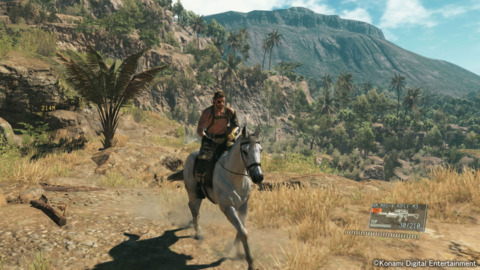
The Phantom Pain opens with a chilling prologue, immersing players in the grim reality of war. The game's protagonist, the enigmatic Big Boss, awakens from a coma after nearly a decade. As players grapple with their new, vulnerable state, they're thrust into a world of betrayal, espionage, and a quest for vengeance that drives the narrative forward.
From the moment the game begins, it's evident that Kojima Productions has pushed the boundaries of what can be achieved in video game storytelling. The game's plot is multi-layered and rife with political intrigue, exploring themes of revenge, the loss of identity, and the blurred lines between hero and villain. This complexity is emblematic of Kojima's narrative prowess, as he weaves a story that is as thought-provoking as it is emotionally resonant.
The storytelling in The Phantom Pain is not just conveyed through cutscenes and dialogue but is interwoven into the very fabric of the gameplay itself. Kojima has always been a master of the cinematic experience in video games, but here, he elevates it to new heights. The use of real-time rendering and dynamic camera angles allows for a seamless transition between gameplay and cutscenes, erasing the traditional boundaries that have separated the two.
One standout aspect of the storytelling is the game's use of silence. In a medium where dialogue often takes centre stage, The Phantom Pain employs silence as a powerful narrative tool. It forces players to pay attention to their surroundings, listen to the subtle cues of the environment, and interpret the emotions conveyed through body language. This choice creates a unique sense of immersion and makes every encounter, every mission, feel like an opportunity to uncover a piece of the puzzle.
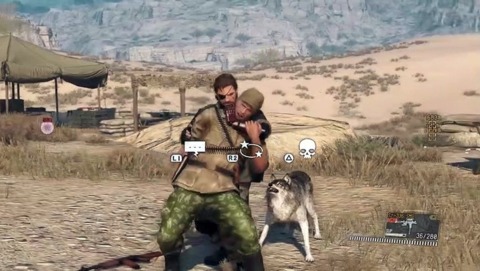
The game's cast of characters is a testament to Kojima's ability to create compelling and multi-dimensional individuals. Big Boss, voiced by Kiefer Sutherland, undergoes a subtle and profound transformation throughout the game. Although initially met with scepticism by some fans, Sutherland's performance brings a new level of gravitas to the character. His portrayal captures the weariness, determination, and inner turmoil of Big Boss as he navigates a world of shifting alliances and betrayals.
Supporting characters like Ocelot and Miller add depth and complexity to the narrative, with their motivations and secrets that slowly unravel as the story progresses. And then there's Quiet, the sniper whose silence becomes a poignant symbol of the game's exploration of communication and connection. Quiet's story arc is one of the most emotionally resonant in the game, showcasing Kojima's ability to tell a compelling and unconventional love story.
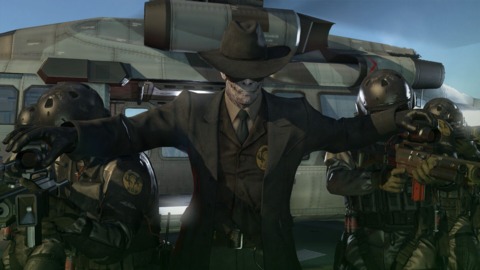
The game's antagonist, Skull Face, is a masterclass in villainy. His calm demeanour and measured speech contrast starkly with his brutal actions, making him a character both fascinating and revolting. His motivations, while rooted in vengeance, also touch on themes of cultural imperialism and the consequences of unchecked power. Skull Face is a character who lingers in your thoughts long after the credits roll.
As with any Metal Gear Solid game, The Phantom Pain is not just about the characters and story; it's also about gameplay innovation. Kojima's team has redefined the stealth-action genre with mechanics that are as deep as they are intuitive. The open-world design of the game's setting, Afghanistan and Africa, grants players unparalleled freedom in how they approach missions. Whether you choose to sneak in under the cover of darkness, create diversions, or go in guns blazing, the game adapts to your style.
One of the most remarkable aspects of the gameplay is the Fulton Recovery System. This ingenious device allows players to extract soldiers, resources, and even animals from the battlefield, adding an element of strategic resource management to the game. It's a mechanic that encapsulates the game's central theme of building and expanding your private army, Diamond Dogs.
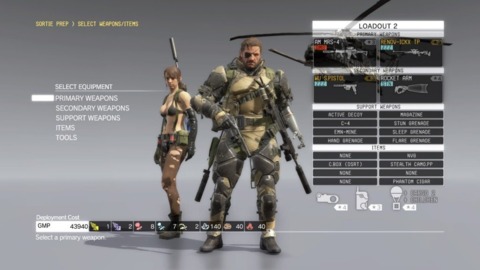
The flexibility of the gameplay mechanics extends to the AI as well. Enemy soldiers adapt to your tactics, communicate with each other, and learn from your actions. This dynamic AI keeps the gameplay challenging and ensures that no two missions play out the same way. This attention to detail elevates The Phantom Pain beyond a simple action game.
The level of detail in the game's world is nothing short of astonishing. The environments are vast and beautifully rendered, from the arid deserts of Afghanistan to the lush jungles of Africa. The day-night cycle and dynamic weather systems not only affect visibility but also impact enemy behaviour and patrol patterns. It's a testament to the meticulous craftsmanship of the development team that every inch of the game world feels alive and purposeful.
The audio design of The Phantom Pain is equally impressive. The hauntingly atmospheric score, composed by Ludvig Forssell, sets the tone for each mission, enhancing the sense of tension and immersion. The use of licensed '80s music on the in-game Walkman adds a touch of nostalgia and humour to the experience, showcasing Kojima's knack for blending the serious and the absurd.
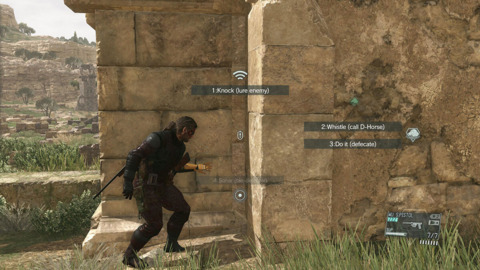
The voice acting, beyond Sutherland's exceptional performance, is top-notch across the board. Each character is brought to life with nuance and authenticity, adding depth to their personalities. The use of multiple languages in the game, including English, Russian, and Afghan Pashto, adds to the authenticity of the world and the characters that inhabit it.
One of the most striking aspects of The Phantom Pain is its willingness to tackle mature and thought-provoking themes. The game doesn't shy away from the horrors of war, exploring the moral ambiguity of Big Boss's actions and the consequences of his choices. It questions the very nature of heroism and the sacrifices made in the name of a cause.
The game also delves into the idea of information control and manipulation, a theme that is especially relevant in today's world of digital espionage and fake news. Kojima's prescient storytelling is a stark reminder of the power that information wields and the ethical dilemmas that arise when that power is abused.
However, it's not all grim and serious. The Phantom Pain is peppered with moments of humour and absurdity, often delivered through the game's iconic Codec conversations. These interactions, whether it's Ocelot discussing the merits of a good revolver or the enigmatic Code Talker sharing his wisdom, provide a welcome respite from the weight of the narrative.
As with any masterpiece, The Phantom Pain is not without its flaws, though they are few and far between. Some may find fault in the game's pacing, as the middle section can feel slightly drawn out, with a few repetitive missions. Others may lament the absence of certain beloved characters, like Solid Snake. However, these minor shortcomings pale in comparison to the game's overwhelming achievements.
Metal Gear Solid V: The Phantom Pain is a triumph of storytelling, gameplay innovation, and emotional depth. It stands as a testament to the artistic potential of video games as a medium for storytelling. Hideo Kojima and his team have crafted a game that not only pushes the boundaries of what is possible in the industry but also challenges players to contemplate the very nature of heroism, identity, and the consequences of our actions.

The Phantom Pain is a game that lingers in the mind long after the credits roll, leaving players with a sense of awe and a hunger for more. It's a game that will be discussed, dissected, and celebrated for years to come, solidifying its place in the pantheon of gaming's greatest achievements. If you've ever questioned whether video games can be art, look no further than Metal Gear Solid V: The Phantom Pain for your answer. It's not just a game; it's a masterpiece.
